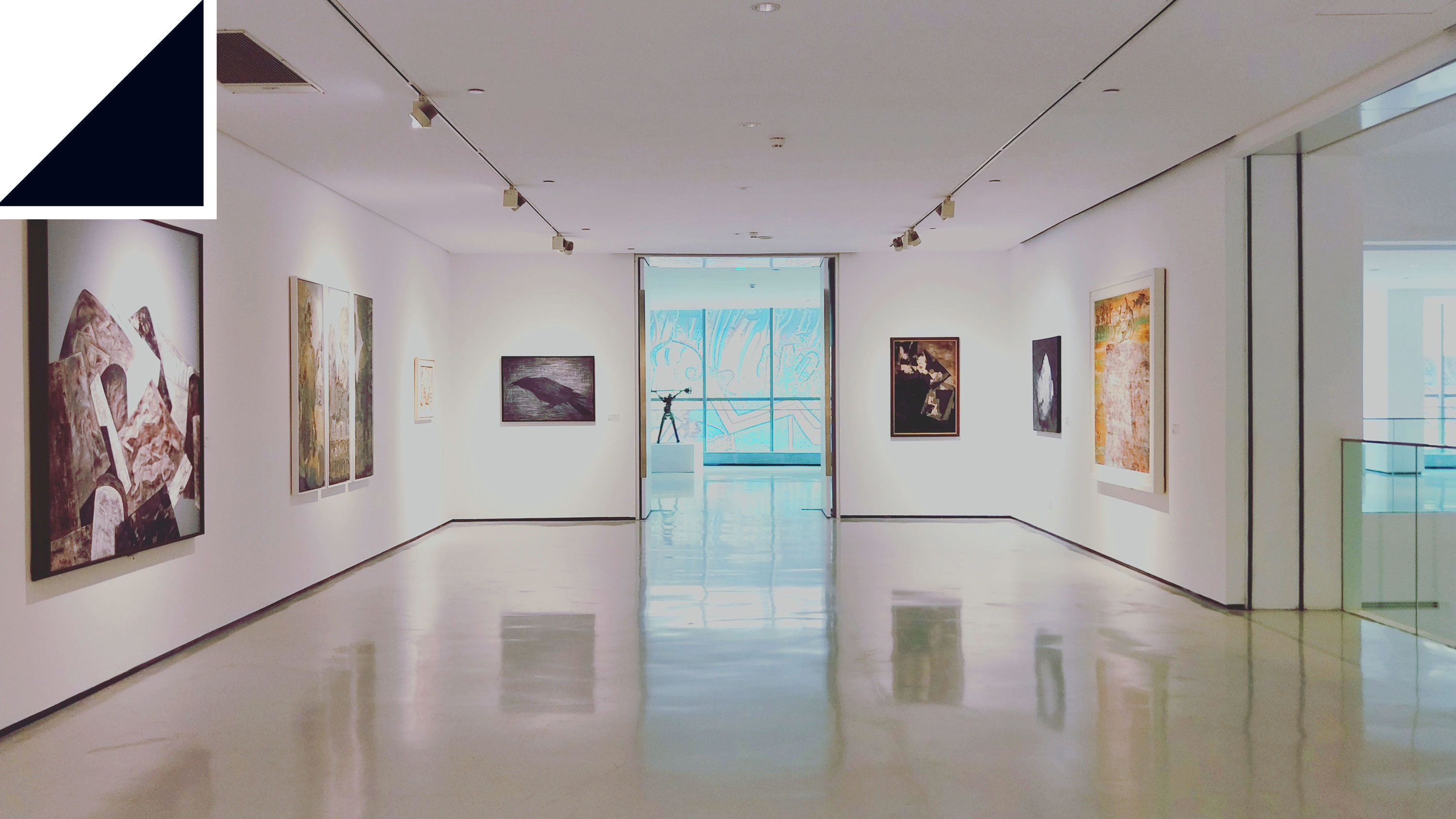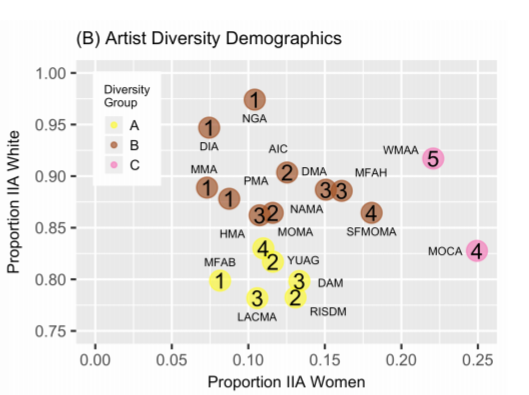More than 75% of artists in US museums are white men, data mining reveals

The nature of art is one of the great questions of philosophical discussion. Though there is little in the way of agreement on this topic, it is clear enough that art is somehow a reflection of the society from which it evolves.
How do the collections in art museums reflect the societies that they’re from? A good starting point is to investigate the demographic diversity of the artists in these collections. But this work has never been done. Until now.
Today, Chad Topaz at Williams College in Massachusetts and a few colleagues use data mining and crowdsourced research to build the first picture of demographic diversity in art collections across the US. And the results make for sobering reading.

Topaz and co begin their investigation by studying the collections from 18 of the most important art museums in the US, many of them among the largest and most significant in the world. These include the National Gallery of Art in Washington, DC, the Museum of Modern Art in New York, the San Francisco Museum of Modern Art, and so on.
The researchers first downloaded the online catalogues from each of these museums. They then mined this data in a way that picked out the artist associated with each piece of art, along with any related information, such as the artist’s gender and ethnicity.
In many cases, none of this information is available. For example, many works are by unknown artists, in which case the investigation runs into a dead end. But the mining process produced the names of over 11,000 artists, which the team used as the starting point for the next phase of their investigation—crowdsourced research. Several artists appeared more than once in this database, so the total number of individually identifiable artists turns out to be 10,108.
Topaz and co used Amazon’s Mechanical Turk service to ask human crowdsource workers to research the background of each artist and to answer 10 questions about them, such as their gender, ethnicity, nation of origin, and date of birth.
They gave each Turker the artist’s name and the art museum web link from which the information was downloaded. But Turkers could also use Google and Wikipedia to glean more information. The team employed standard data checking protocols, such as giving the same research task to at least three Turkers to achieve a consensus on the results.
The results reveal a clear imbalance in the artists represented at museums in the US. “We find that 85% of artists are white and 87% are men,” say Topaz and co.
Some museums have significantly less diversity than others. For example, the National Gallery of Art in Washington, DC, was founded in the 1930s by the American banker Andrew Mellon, who donated his own collection to the nation, partly for tax reasons. Since then, various others have donated works to the museum, which is now one of the largest in North America.
But the museum’s holdings cannot be described as diverse. Over 97% of the artists in its collection are white, and 90% are male. The percentage of black or African-American artists in the collection is precisely zero.
The diversity is not much greater for museums that specialize in modern art. At the Museum of Modern Art in New York, for example, only 11% of the artists in the collection are female, 10% are Asian, and 2% are black or African-American. At the San Francisco Museum of Modern Art, 18% of the artists are female, 7% Asian, and 2% black or African-American.
“With respect to gender, our overall pool of artists across all museums consists of 12.6% women,” says Topaz and co. “The four largest groups represented across all 18 museums in terms of gender and ethnicity are white men (75.7%), white women (10.8%), Asian men (7.5%), and Hispanic/Latino men (2.6%).” All other groups are present at less than 1%.
There are some caveats associated with the data. Many museums have numerous works of art by unknown artists, and the diversity in this group cannot be estimated. What’s more, the team have had to infer the data for the vast majority of identifiable artists. Clearly, this would be more accurate if the artists themselves supplied the information.
Still, the research provides an important benchmark for museums to use in developing their collections further.
An interesting question is why the diversity is so low in art museums. That’s clearly a complex issue related to factors such as social issues at the time the artworks were created, when they were added to the collection, and how this has changed over time. This is beyond Topaz and co’s remit.
However, the researchers provide some insight into the problem by studying how each museum’s diversity relates to its mission. “Our clustering results expose a very weak association between collection mission and diversity, thereby opening the possibility that a museum wishing to increase diversity in its collection might do so without changing the geographic and/or temporal emphases of its mission,” they say. That’s a carefully worded statement!
In some ways, these results merely reflect a broader lack of diversity. For example, recent studies of diversity among art museum staff show that while 60% are women, only 43% of directors are women. A similar bias exists in other industries, and indeed across society in general.
What’s interesting about the approach of Topaz and co is that it provides a way to dig deeper into the issue. “Our methodology can be used to broadly and efficiently assess diversity in other fields,” they say.
But for the moment, the implication for the world of art museums is clear: when it comes to diversity, there is significant room for improvement.
Ref: arxiv.org/abs/1812.03899 : Diversity of Artists in Major US Museums
Keep Reading
Most Popular
Large language models can do jaw-dropping things. But nobody knows exactly why.
And that's a problem. Figuring it out is one of the biggest scientific puzzles of our time and a crucial step towards controlling more powerful future models.
How scientists traced a mysterious covid case back to six toilets
When wastewater surveillance turns into a hunt for a single infected individual, the ethics get tricky.
The problem with plug-in hybrids? Their drivers.
Plug-in hybrids are often sold as a transition to EVs, but new data from Europe shows we’re still underestimating the emissions they produce.
Stay connected
Get the latest updates from
MIT Technology Review
Discover special offers, top stories, upcoming events, and more.